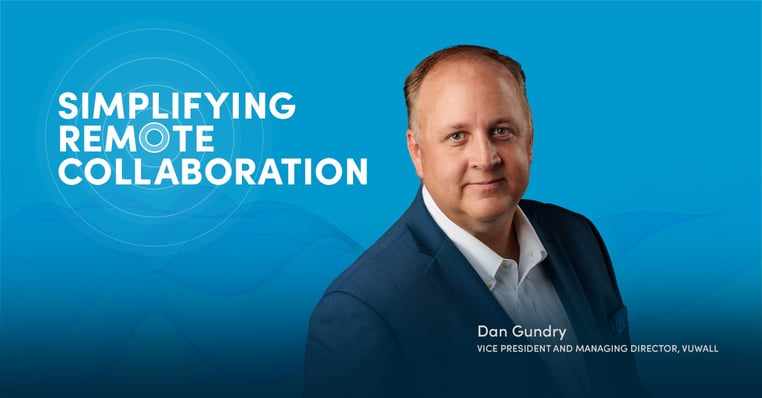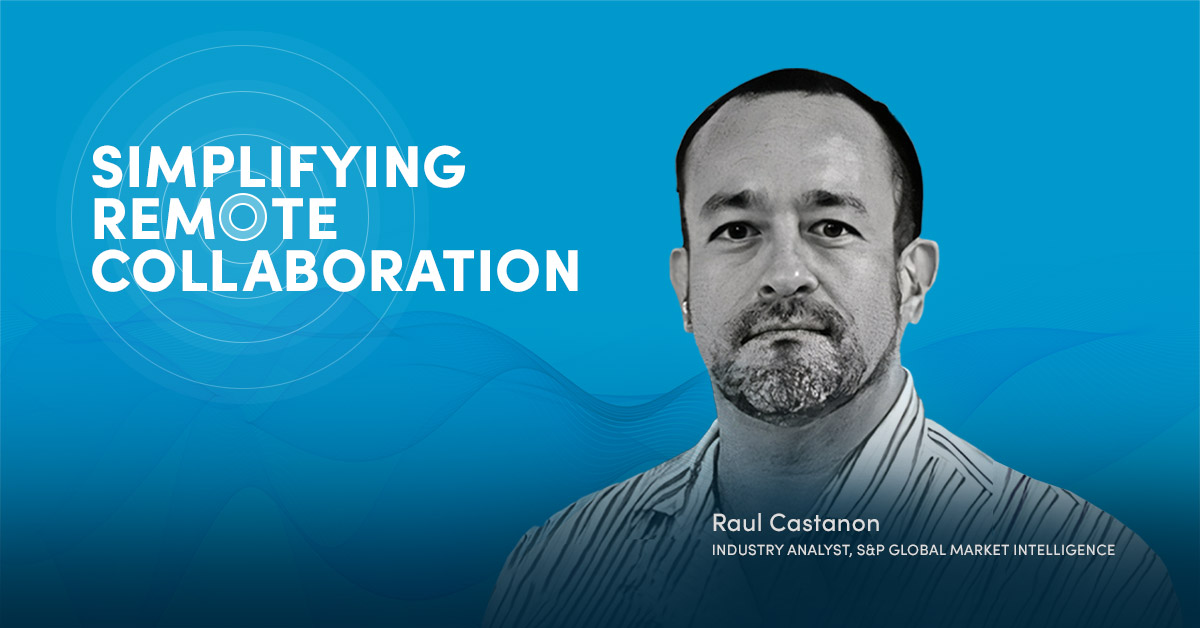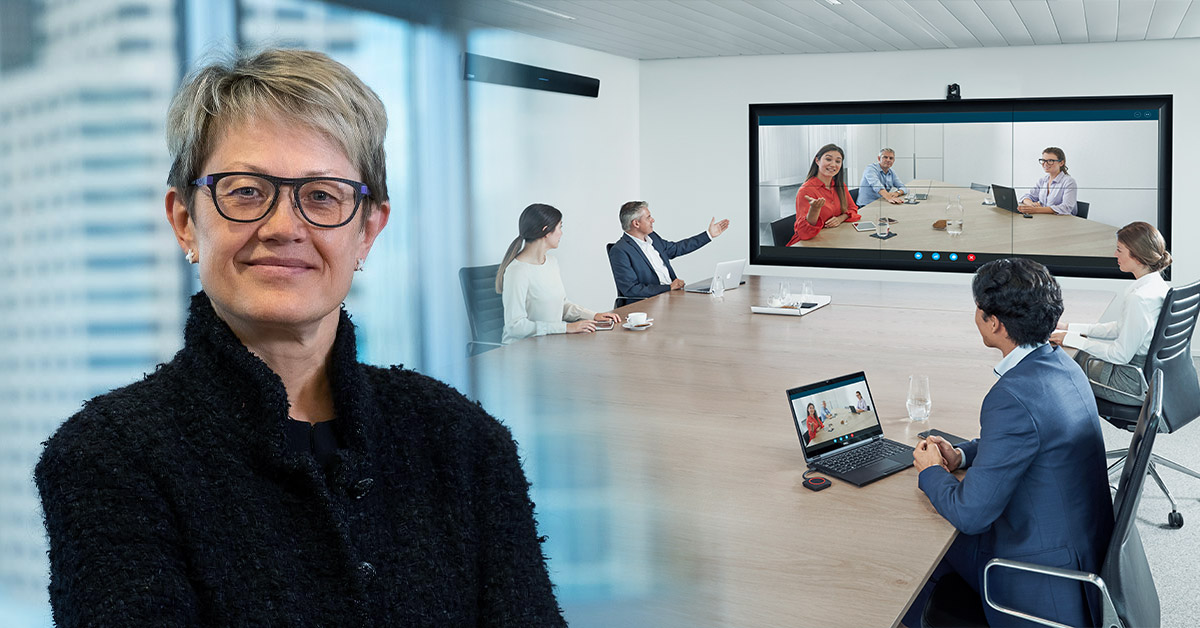November 17, 2022
Video podcast: Pressures on IT arising from the shift to hybrid

Posted by Nureva on Nov 17, 2022 6:00:00 AM
The COVID-19 pandemic and the rise of hybrid working have fundamentally changed what it means to work in IT. In this episode of the Simplifying Remote Collaboration podcast, Tyler Kern talks to Dan Gundry, vice president and managing director of VuWall USA, about how hybrid meetings are putting extra pressure on IT teams. He also shares how taking an IT-friendly approach to meeting spaces – and choosing easy-to-use technology products – can help.
Timestamps
0:00 – Series introduction
0:25 – Episode introduction
1:25 – The pandemic and new pressures for IT departments
3:39 – Meeting equity for hybrid teams and why it matters
5:45 – How to take an IT-friendly approach to meeting space management
8:02 – What users expect from their meeting room technology
9:25 – Technology products for the office of the future
Podcast transcription
Series introduction: Welcome to Simplifying Remote Collaboration. In each episode, we'll discuss how the shift to hybrid working and learning has put growing pressure on IT departments to better support remote collaboration at a time when resources are stretched thin by competing priorities. We’ll explore ways to simplify the IT setup and management of hybrid spaces.
Tyler: Hello everyone, and welcome to another episode of Simplifying Remote Collaboration, addressing the IT challenges in hybrid spaces, a podcast brought to you by Nureva. I’m your host, Tyler Kern. Thanks so much for joining us for this episode of the program. Today we are talking to Dan Gundry. He’s the vice president and managing director of VuWall USA. Dan, welcome to the podcast. Thanks for joining me.
Dan: It’s awesome to be here. Thank you so much.
Tyler: Absolutely, absolutely. Today on the show, we’re going to be talking a little bit about how the pandemic really shifted the job responsibility for a lot of IT managers and IT departments who need to do more of the AV as far as meeting spaces go, hybrid spaces go, and the way that those shifts really evolved the job description and the different solutions that now begin to pop up that help make those jobs a little bit easier. And so, Dan, let’s start off just with those shifts that the pandemic created. Obviously, the paradigm for what work looks like, with many employees working remote, working hybrid and that sort of thing, has changed a lot of things. So what pressures has this created for IT directors and IT departments?
Dan: Yeah, I don’t know what you’re talking about, there have been no changes whatsoever over the last couple of years, you’re crazy [laughter].
No, first of all, it’s different for every organization. A small organization, which maybe only had one or two IT people, is very different than the way a large health care campus is run that may have staff of 100 people. Nonetheless, the challenges are still real, and the changes and the pressures that they’re under, the stress, are incredible.
Specifically about the world that we live in and specifically about the question about hybrid, you can run off in so many different tangents when you’re talking about it. But I think some of the core pieces are now I’m managing somebody’s home network, I’m extending my firewall and my security perimeter beyond the walls of my physical headquarters location. How do I manage all of those devices that are out there? How do I just afford more time in my day to do all the new things that I need to do, affect all the new challenges? I still have that same limited number of hours, limited number of resources, available. I think that kind of hits it at a very high level, and we could always dive into deeper weeds in just about every area of security that you want to and IT.
Tyler: That’s a great point. You talked about a lot of the things that IT managers should be spending their time on. Obviously, we could all use more hours in the day to get things done and to make things happen. I think we all kind of feel that pressure these days. But in addition to those responsibilities that IT managers and IT directors have of creating secure parameters around devices and all of the different security things that need to be taken into account these days, you also have IT managers having to deal with the fact that meeting rooms and meeting places need to be able to accommodate those hybrid workers and those remote workers to make sure that they are also able to then participate in the same way that maybe people who are in office can participate in conversations, in discussions. In addition to all of the different things we talk about around device security and that sort of thing, there’s also an AV component where IT managers are having to kind of help with what those meeting spaces are going to look like now.
Dan: So the term that’s out there, the buzzword in the industry right now is meeting equity, or meeting experience, kind of similar things. How do I take all these different people – some are in the office, some are in different offices, some are working from home. And home can be described so many different ways. I could be at my kitchen table versus an actual office or a dedicated space within my house. How do I make sure that everybody has the same meeting experience and gets the same out of it, can be heard, can collaborate and share?
You know, when you’re in an office environment, you can look across a table and make eye contact with somebody and roll your eyes if somebody said something that’s either funny or doesn’t make sense or whatever, pass notes, etc., etc. What does that look like in a hybrid environment? What does it look like in a completely remote environment?
I think IT managers, AV managers, business leaders have been trying to find a way so that those people that are out there on an island working from home one day or every day aren’t by themselves. They’re not isolated, they feel like an equal part of the team, and they have an equal experience in the meeting and in the workshops. We pay them to do a job. We want them to have full access to do the job and collaborate with their team members. That’s a real stressor, and the solutions and how we deal with it and how we manage it are going to be different for every organization.
But probably the number one biggest problem about the hybrid workflow right now is what does that meeting experience look like? What does meeting equity mean to a given individual organization?
Tyler: That’s absolutely right. And I suppose when IT managers are dealing with that, that’s less time that they have to deal with some of the other things that you were talking about earlier, which just adds more to the plate. So with this looking different for every organization, having solutions that can really help solve this, especially for the folks in office to be able to utilize solutions that are quick and easy within their meeting spaces that improve and increase meeting equity, would certainly give time back to IT managers and allow them to focus on the things that they were hired to focus on.
Dan: Yeah, your common, everyday IT manager is not going to be an expert in AV technology. That’s not what you hired them to do. It’s not what they’re paid to do. But it has become a natural part of their job, especially as those meeting spaces, those meetings themselves, are now being held on the network.
So you’re right, they definitely need to find a way to do what we need to do speaking in their terms, using their terms, using their protocols, living in their space – so cloud management of those things, easy installation of those things. The models in which you buy it, the avenues in which you buy it, all become really important. Because again, it’s not necessarily their day job. This is not what they signed up to do, which is manage the meeting space.
I think those solutions out there that get it, that take an IT approach to deployment, to management, to support, that are not complex to install and set up and configure, where you don’t need to be a member of AES in order to set up an audio system in a room, those are all valid because it makes the IT manager more efficient and really allows them to do the things that they really need to do, which is protect and defend and support the network of an organization and the IT backbone of an organization.
Tyler: You know, one of the things I have been extremely interested in discussing and learning more about throughout this pandemic era, let’s say, are the different evolutions we’ve made as a society that won’t ever go back to how it was pre-pandemic. And I think hybrid and remote work is probably a thing that, for certain parts of our society, is here to stay for the long term. So I wonder just how you’ve seen an evolution in terms of how comfortable people are utilizing the tools that enable remote and hybrid work – just your perspective on the way that we’ve evolved. We still make the jokes like you’re on mute, that sort of thing, and I think we will probably always be saying those sorts of things. But for the most part, it seems like we adapted rather quickly in 2020, and our understanding in our use of tools and things like microphones, headsets, different things like that has really grown and evolved over the last two-and-a-half, three years or so.
Dan: I think the first three or six months, we all might disagree with your assessment because we were all scrambling to try to make sense of it and get something that was feasible and working. But the landscape has kind of ironed out a little bit. We’ve gotten to this place where we can breathe a little bit. Usually, those periods of stress and friction allow for innovation, and we’re seeing that with different organizations that are coming out with some of those tool sets.
Users are looking for ease of use. They have been for a long time. And you can see that in the development of touch panels these days that are very much more intuitive and easier and streamlined. There’s not an instruction manual to operate an iPhone® or an iPad®, and that speaks to that we’re looking for nice and easy. I think our technology solutions have already been trending that way.
Now we’ve just gotten to the point where I just want to come in a room, maybe not even hit a button, and something just works. And that’s ultimately the user experience, the meeting experience that we need to get to. It just works.
Tyler: When you think about the office of the present but also the future, where we’re going and where we’re heading, what do you think are some of the characteristics that make up these sorts of spaces? Like you said, ease of use. People are looking for that plug and play ability to be able to walk in and know that something is going to work. Is that going to be one of the hallmarks of what offices look like in the future?
Dan: Boiling down, there’s three different technologies, I think, for the office of the future. One is digital signage. You can tie that into wayfinding. If I’m not in the office every day, I may not know what I need to know. And signage in a building is going to allow me to communicate with employees in a different way.
Hot desking is going to continue because we’re not going to have these firm four-wall closed offices like the one I’m in right now. It’s going to be a lot more open space, a lot more flexible space. So knowing where people are, being able to do employee counts based off that for any kind of emergency situations.
But then the third one, the one that’s really going to have an impact on productivity, that really has an ROI, is workspace solutions – your huddle rooms, your conference rooms. And regardless of the size of the space and the type of the space, the user experience, that meeting experience, that meeting equity concept all needs to be as much on parity as possible. So simple to deploy, simple to manage, simple to use solutions, regardless of the size or type of space, is going to be of utmost importance.
Tyler: Tell us a little bit about VuWall before we sign off today so people know a little bit more about you and what the company does.
Dan: Oh gosh, VuWall has nothing to do with workspace solutions whatsoever, that’s the beautiful thing about this. We’re a visualization platform primarily in the command-and-control markets, but also executive briefing centers and some other types of space. High end visualization, any content to any display. The tagline here is control what you see.
Tyler: I like that. I like that a lot. So Dan, any final thoughts that you have for people about what we’ve talked about here today? What do you want people to know and maybe understand about ease of use, about utilizing these spaces in hybrid and remote work following this episode? Anything you want to leave people with?
Dan: I think first of all, every organization is a little bit different and we all need to respect that, whether we’re practitioners and professionals that sell and integrate and support these services or whether we’re the actual people that are out there on islands that are actually trying to find solutions in this market. You’re an individual, you’re different, everybody is.
But there’s commonality out there. You’re looking for plug and play. You’re looking for things that are certified on different platforms because you don’t want to be the guinea pig out there. You’re also looking for simple, easy to use and easy to deploy. These spaces aren’t going away. These problems aren’t going away. And I think at this point, it’s just a matter of finding a trusted partner.
Tyler: Very, very well put. Dan Gundry, vice president and managing director of VuWall USA. Dan, thank you so much for joining us here on Simplifying Remote Collaboration and explaining a little bit more about your thoughts on this.
Dan: It’s a pleasure. Thank you.
Tyler: Absolutely. And thank you, everyone, for tuning in to this episode of the show. For more, you can visit nureva.com to learn more about Nureva and also the solutions that they provide. And to stay updated with the podcast, make sure you subscribe to the podcast on Apple® podcasts, Spotify or of course by visiting the Nureva website to stay up to date with the latest. And stay tuned. We’ll be back soon with more conversations just like this one. But for Dan Gundry, I’m Tyler Kern. We’ll talk to you next time.
Great audio, simplified
Are you revamping your meeting rooms for hybrid work? Clear, reliable audio – that’s also easy and affordable – is more important than ever. Find out how our groundbreaking technology delivers the simplicity and value you need.
Posted by
Nureva
November 17, 2022















